Let me invite you to the second part of the multi-scenario session report from Field Commander Alexander. In the first part I described the Granicus and Issus campaigns, giving the historical background but also short description of the game. Today I will conclude the story of great general – will I manage to repeat his deeds in this fantastic solitaire game? More below!
The Game
Let me bring some more info about the game before heading to the session report. When playing the game, you are placed in Alexander’s footsteps when he comes of age in 338 BC, just before the battle of Chaeronea. From that point on, you get to decide where to travel, when to battle, when to negotiate, and when to seek out divine prophesies to guide your actions.
The life of Alexander is divided into several campaigns, each spanning several years. During each campaign, you are given goals, but how you achieve those goals is up to you. Do you enter into battle? Or negotiate? How strong are you? How strong are they? What can you gain? These are all decisions you get to make, and must make well, if you are to live up to the immortal standards set before you.
Tyre Campaign
Historical Background
After defeating Darius III at the battle of Issus in November 333 BCE, Alexander marched his army (about 35,000-40,000 strong) into Phoenicia, where he received the capitulation of Byblus and Sidon. Tyrian envoys met with Alexander whilst he was on the march, declaring their intent to honour his wishes.
Alexander’s request was simple: he wished to sacrifice to Heracles in Tyre. The Tyrian’s recognized this as a Macedonian ploy to occupy the city and refused. The Tyrian refusal to capitulate to Alexander’s wishes was tantamount to a declaration of war. Tyrians had every reason to be confident – in addition to a powerful navy and mercenary army, their city lay roughly half a mile (0.8 km) offshore, and the walls facing the landward side towered to an impressive 150 ft (46m) in height.
The Macedonian army was unable to capture the city, which was a strategic coastal base on the Mediterranean Sea, through conventional means. Alexander responded to this problem by first blockading and besieging Tyre for seven months, and then by building a causeway that allowed him to breach the fortifications. (you will see all those elements in the game)
It is said that Alexander was so enraged at the Tyrians’ defence of their city and the loss of his men that he destroyed half the city. According to Arrian, 8,000 Tyrian civilians were massacred after the city fell. Alexander granted pardon to all who had sought sanctuary in the temple, including Azemilcus and his family, as well as many nobles. 30,000 residents and foreigners, mainly women and children, were sold into slavery.
Campaign set-up
In this campaign we will need to deal first with large city of Tyre. There is a lot of new rules – see how many Walls we have, which can be tackled by Siege Engine Ships. At the same time you earn money with Transports, susceptible to the raids of Tyre Fleet. You can also start to build the moat, but it takes time to complete. Which strategy to choose in order to conquer this grand city?
Session Report
Campaign Conclusion
After Granicus and Issus, which more or less were similar campaigns, that was quite refreshing, new challenge. No more large distances to travel, but a lot of Walls to scale and Sea to cover. Fighting with enemy fleet, building moat, not being able to use you best troops – Phalanx and Heavy Cavalry – yes, that was a challenge which in the end I managed to meet – gaining 50 VPs and 132 Immortality points!
Gaugamela Campaign
Historical Background
After a two-year campaign, in which Alexander the Great captured Tyre and Gaza & conquered Egypt, in 331 he marched into Mesopotamia, intent on attacking Babylon. Darius had raised another army, strong in cavalry but lacking in good infantry. The two armies met on the plain of Gaugamela.
Darius posted cavalry on the right and the left and occupied the center with his Greek mercenaries, guard cavalry, elephants, and chariots. Alexander placed the Thessalian horse on the left, gave Craterus the phalanx in the center, and placed himself in person with the Companions on the right.
The Macedonian right managed to hold their attackers just long enough for Alexander to charge with his Companions and heavy infantry straight for Darius. As he had at Issus, Darius turned and fled the field. Alexander wheeled about and charged with the Companions into the Persian cavalry, forcing them back. Soon the entire Persian army was in retreat.
After Gaugamela, The Persian startaps decided to kill Darius III. Alexander quickly overwhelmed Persia and headed for India, where in another grand battle, at Hydaspes, he once again proved his incredible tactical genius.
Campaign set-up
No more small armies – both on Alexander side as well as his enemies. The gold is very important here, fueling all the moves and allowing to refit your army – even victorious, the Great General will have significant loses. And the distances are simply enormous, and you need a lot of supplies to cover them. How will it go?
Session Report
Campaign Conclusion
I sighed wit relief after finished campaign. Baht was tough and very demanding, but Alexander managed to win. The final score of 30 VPs and 102 Immortality Points is very satisfactory for me. Being able to play with level 8 Alexander, multiple insights and various battle plans really allowed for deep, varied approach to each of grand battles – Gaugamela and Hydaspes.
Summary
I had a lot of fun with this two campaigns. They are ingeniously designed, with Tyre bringing completely new elements of the game – multiple walls, Siege Engine Ships, moat – and Gaugamela really stretching your skills to maximum with two grand battles to be fought and long distances to be covered. The game proved to be a great classic, and I can’t wait to try next two titles in the Field Commander series – more reports to come!

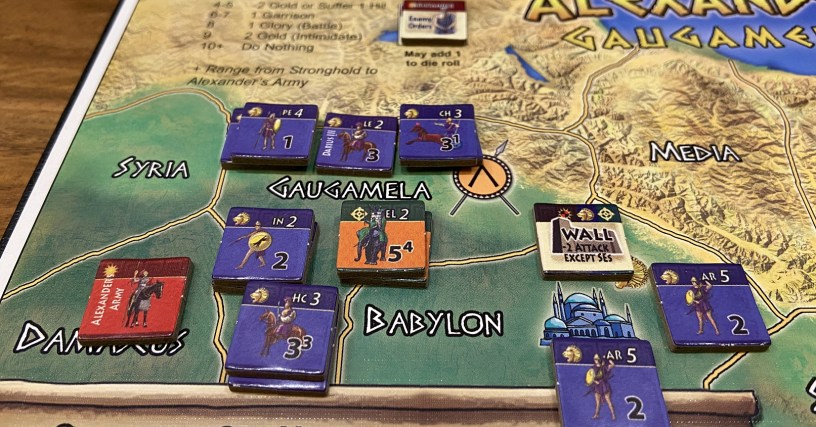
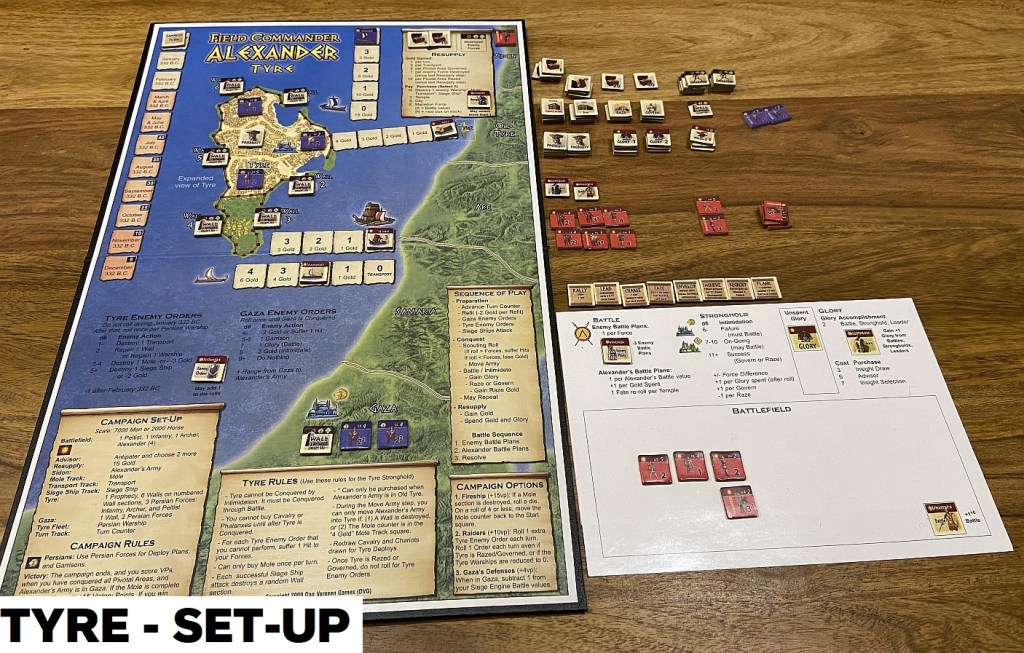

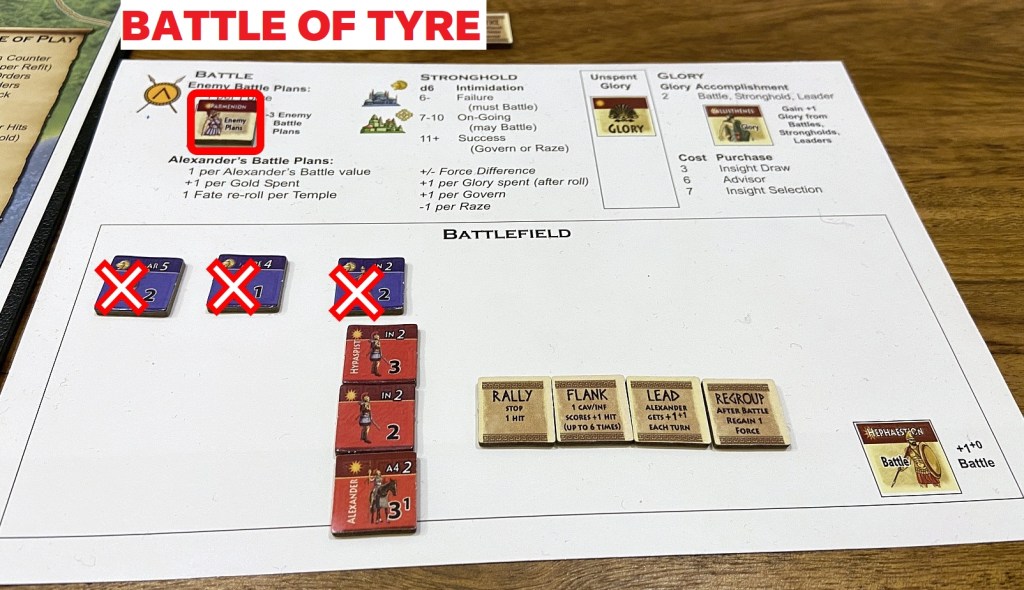


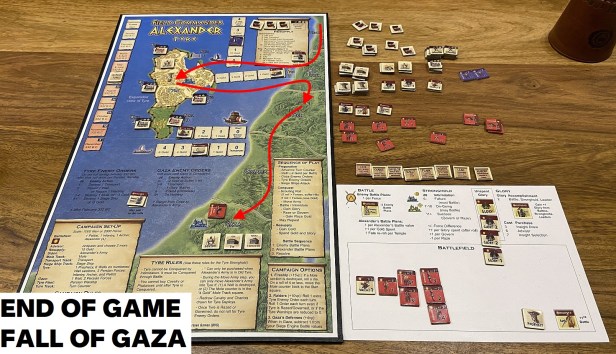
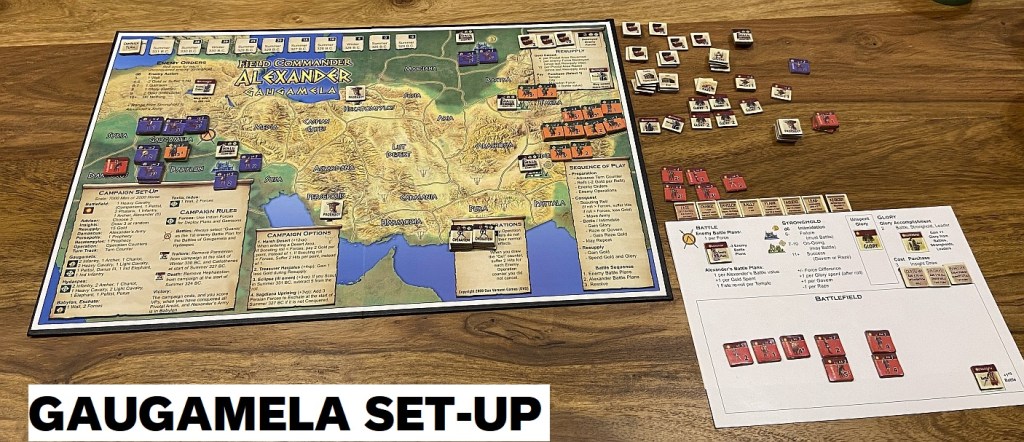
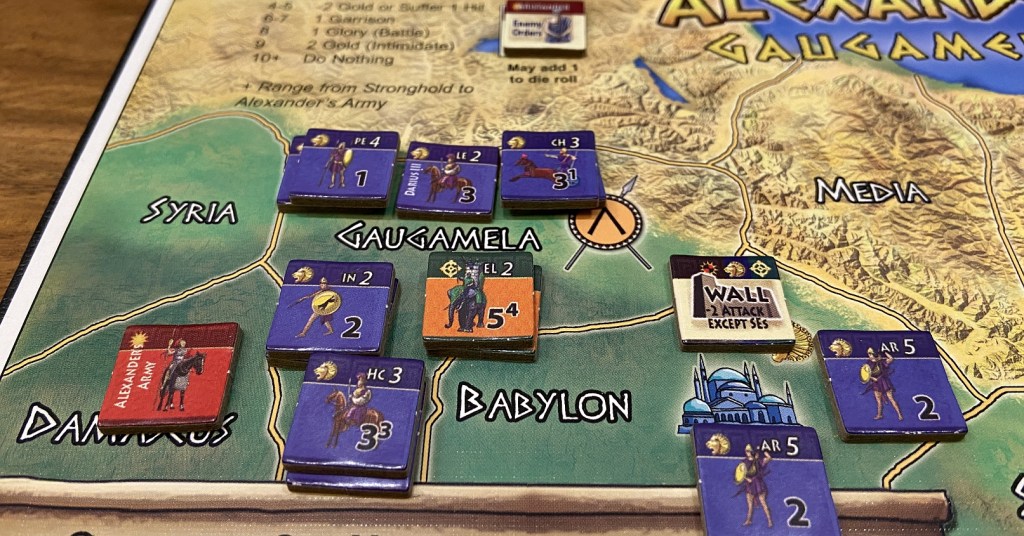
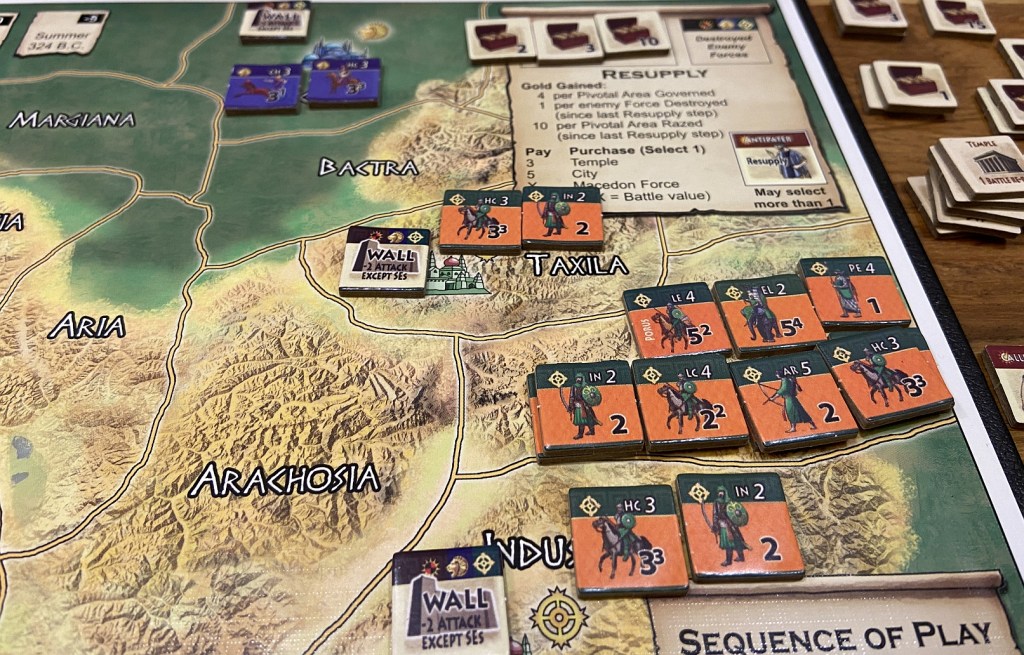
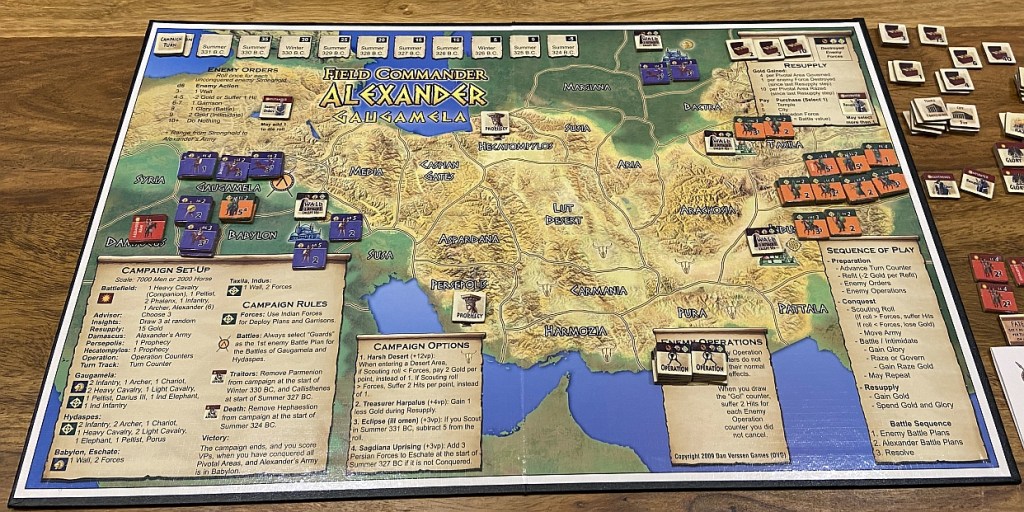
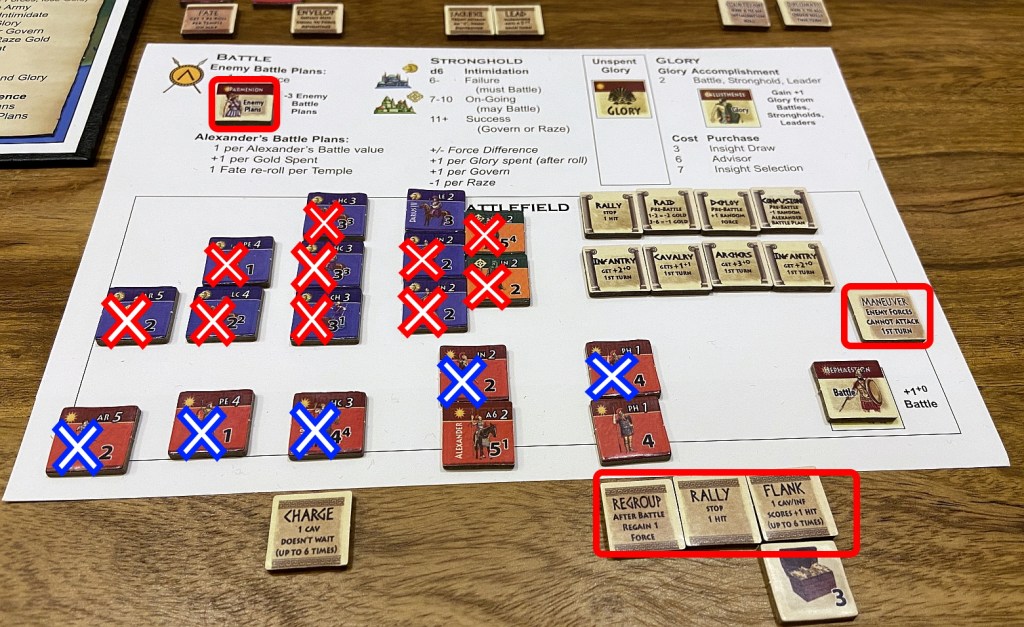
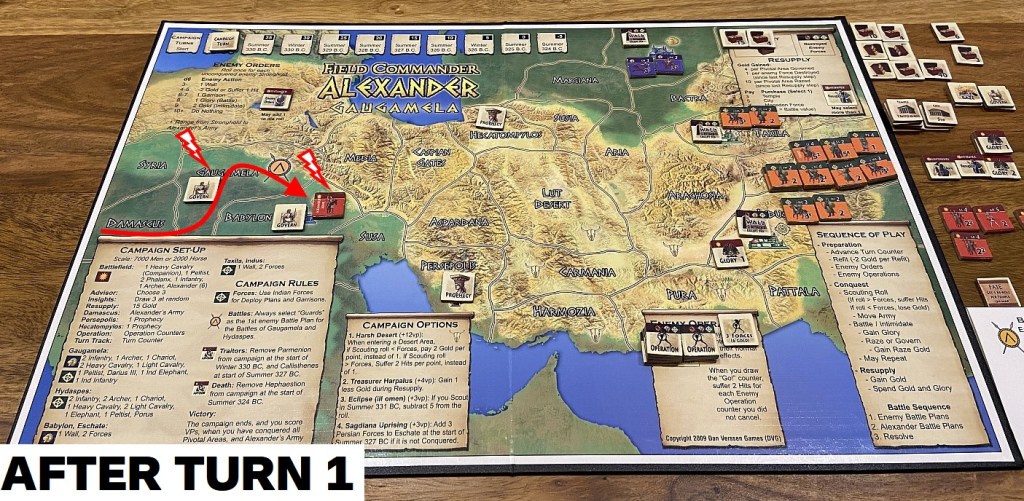
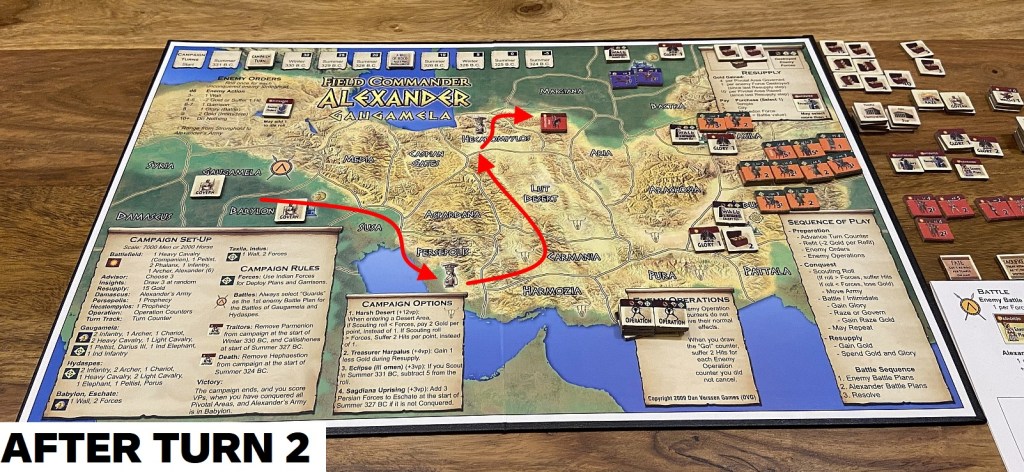


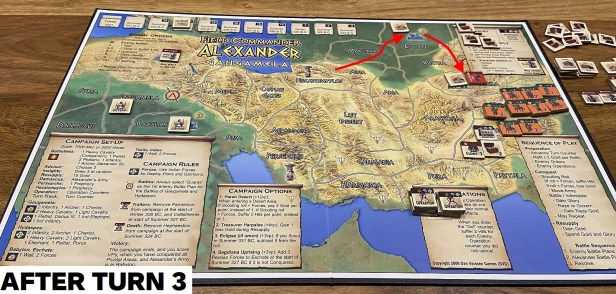


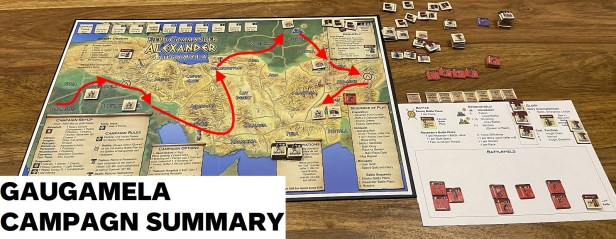
I am a sucker for all things Alexander. Very interesting. Beautiful game.
LikeLiked by 1 person
Yes, replayable, relatively short, with various strategies. If you would like to see the gameplay I encourage you here: Field Commander Alexander – Granicus Campaign
LikeLiked by 1 person